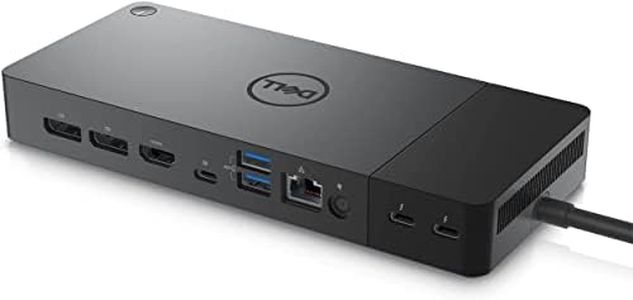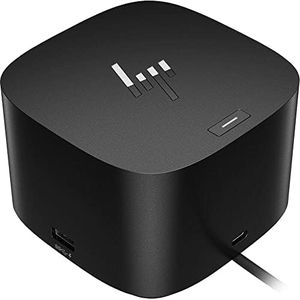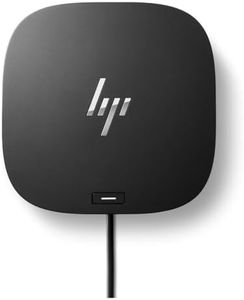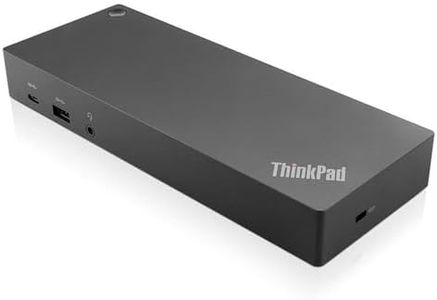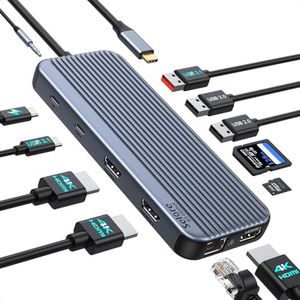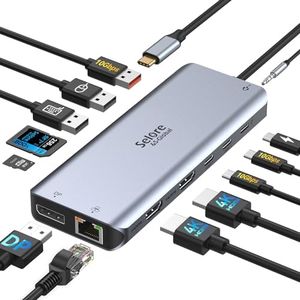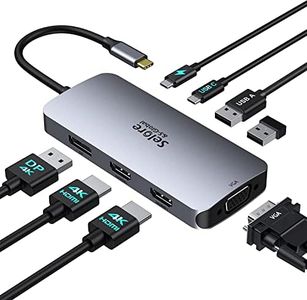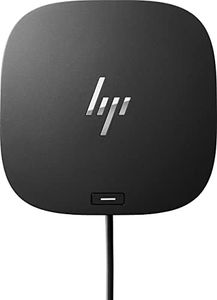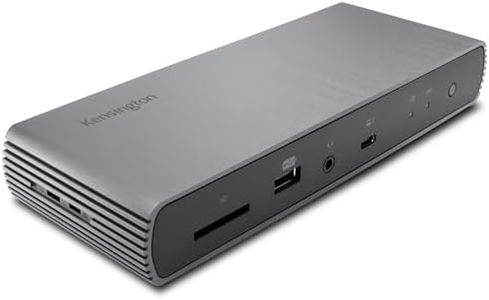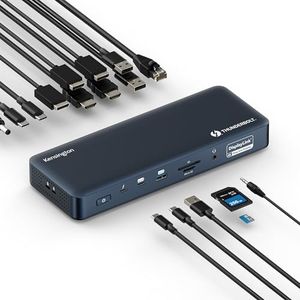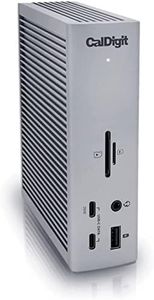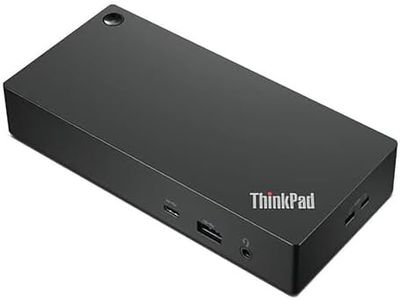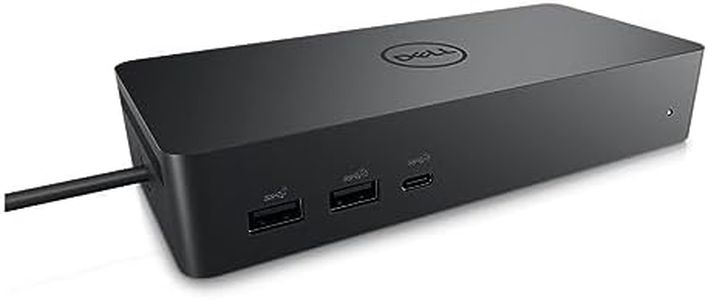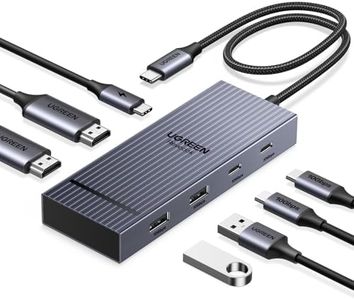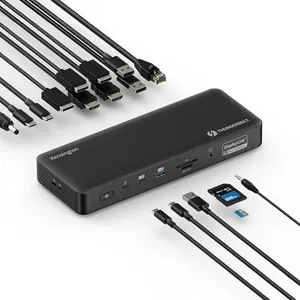We Use CookiesWe use cookies to enhance the security, performance,
functionality and for analytical and promotional activities. By continuing to browse this site you
are agreeing to our privacy policy
10 Best Laptop Docking Stations
From leading brands and best sellers available on the web.Buying Guide for the Best Laptop Docking Stations
Choosing the right laptop docking station can make your workspace more organized, efficient, and comfortable. A docking station allows you to easily connect your laptop to a variety of external devices, such as monitors, keyboards, mice, and more, with a single connection. This is especially useful if you switch between working on the go and at a dedicated workspace. To make the best choice, it's important to consider your current devices, how you work, and any future expandability you might need.Connectivity Type (USB-C, Thunderbolt, USB 3.0, etc.)This spec refers to the main type of cable and port your laptop uses to connect to the docking station. It's important because compatibility determines whether your laptop will work seamlessly with the dock and at what speed. USB 3.0 docks are common and work with many laptops, but transfer speeds are limited compared to newer options. USB-C docks offer faster data and charging but require your laptop to have a USB-C port. Thunderbolt docks deliver the highest speeds and support more displays, but only work with laptops that support Thunderbolt. To choose the right one, check your laptop's ports and capabilities—if you're looking for speed and multiple displays and your laptop allows, Thunderbolt is ideal; otherwise, USB-C or USB 3.0 should be considered based on what your laptop supports.
Number and Type of PortsThis refers to how many and what kinds of connections (like HDMI, DisplayPort, USB-A, USB-C, Ethernet) the dock provides for your devices. It matters because you'll want a dock that can connect all your peripherals and monitors without having to unplug things constantly. Some docks have just a few ports for minimal setups, while others offer a large variety for more complex workstations. To pick the right configuration, list out all the devices you want to connect at the same time (monitors, keyboard, mouse, storage, network cable, etc.) and choose a dock that covers all your needs.
Display Support (Number and Resolution of Monitors)This spec defines how many external monitors you can use and at what resolution and refresh rate. It's crucial for productivity, especially if you want to extend your workspace over multiple monitors. Some docks may only support one screen, while others can handle two or more, with varying resolutions like Full HD (1080p), Quad HD (1440p), or 4K. Higher resolutions are sharper and allow more information on the screen. Decide how many monitors you want to use and what quality you expect—basic office work may need only one or two 1080p screens, while graphic design or data work might need multiple 4K monitors.
Power Delivery (Charging Capabilities)Power Delivery, often marked as 'PD,' describes whether the dock can charge your laptop while it is connected and, if so, how much power (measured in watts) it provides. This is important because some laptops need a minimum power input to charge efficiently. Docks may provide anywhere from 45W to over 100W; smaller laptops do fine with less power, but larger or high-performance laptops may require more. Match the power delivery spec of the dock as closely as possible to your laptop’s original charger for the best experience—underpowered docks may charge slowly or not at all.
Compatibility (Operating System and Brand Support)This refers to whether the docking station is designed to work with Windows, macOS, or both, and sometimes if it's meant for specific laptop brands. Some docks are universal, while others work best with certain systems or even specific models. It's vital to ensure alignment with your laptop’s operating system, as some features (like multi-monitor support) may only work fully on one platform. Always check for compatibility information and, if you use multiple laptops or plan to switch devices in the future, consider a universal dock.
Physical Design (Size, Orientation, and Placement)Physical design refers to how big the dock is, whether it's vertical or horizontal, and how it will sit on your desk. Some docks are compact and easy to hide, while others are larger but offer more ports and stability. If you have limited space or move your setup often, go for a smaller, lighter dock. If you want a tidy, stationary workstation, larger or vertical docks might be best. Think about your workspace layout and choose one that fits smoothly without clutter.
